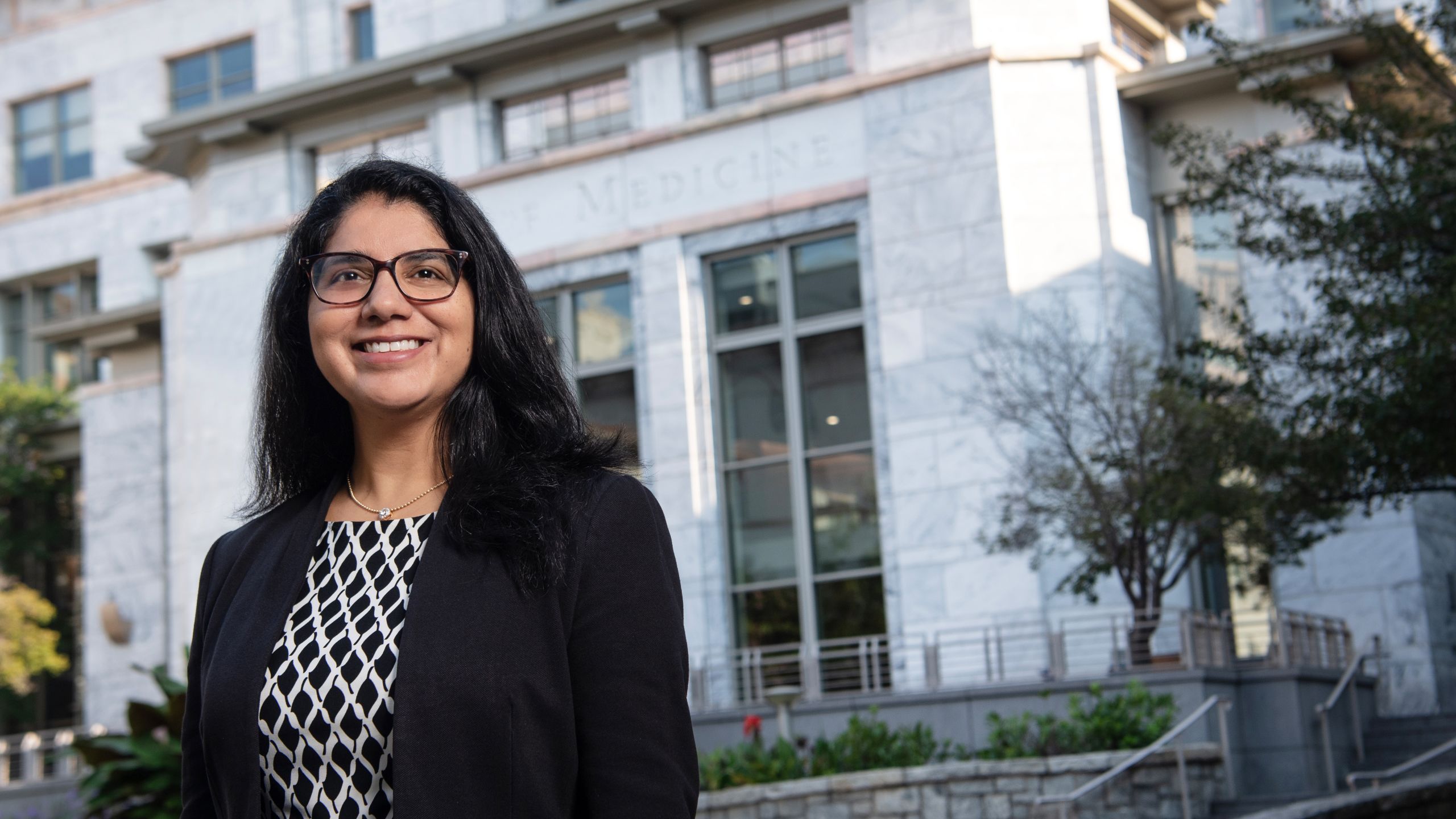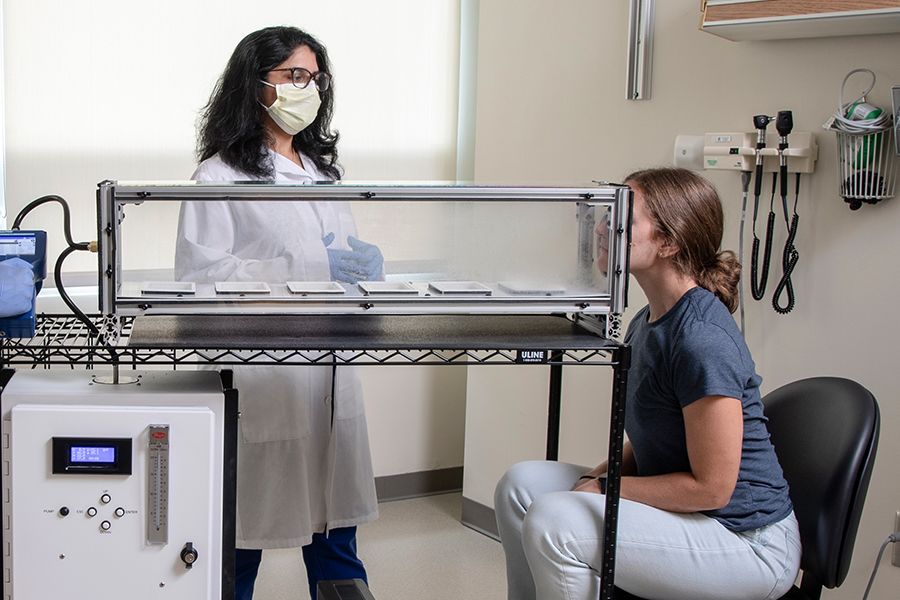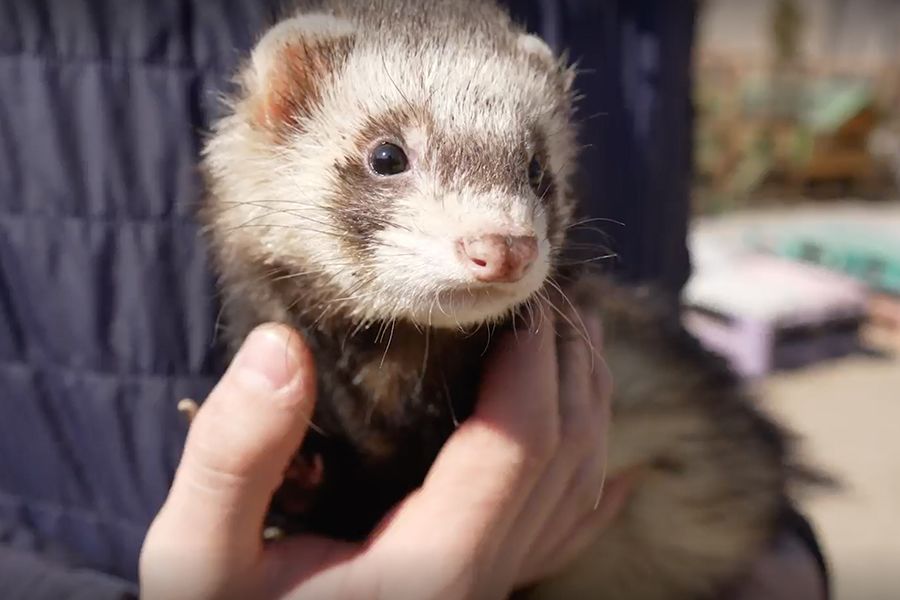I AM AN EMORY RESEARCHER
Seema Lakdawala: Understanding Influenza Transmission

I AM
AN EMORY
RESEARCHER

Seema Lakdawala: Understanding Influenza Transmission
“I have always loved science and I've always loved research. I felt like a fish in water the first time I was in a lab and holding pipettes and doing an experiment.”
— Seema Lakdawala

Seema Lakdawala, associate professor in Emory School of Medicine’s Department of Microbiology and Immunology, studies influenza viruses and how they transmit through the air from person to person.
“Similar to SARS-2 or COVID-19, we know that influenza viruses can transmit long range with small aerosols,” Lakdawala says. “They can also transmit short range with larger droplets. They can transmit through contaminated surfaces and through direct contact. All these modes are possible and can lead to an infection.”
Lakdawala’s reputation as a flu expert is such that Becker’s Hospital Review sought her help in predicting what the coming U.S. flu season might have in store, based on the Southern Hemisphere’s season this spring and summer.
One notable change so far, she told Becker’s, is that data show there's an uptick in influenza B: “Influenza A is still the predominant strain making up 70 percent of cases, but seeing 30 percent are influenza B — that is a little bit different from what we typically see. Usually, we'll see either influenza A and then influenza B peak, but right now we're seeing co-circulation of both."

Lakdawala says she has long been interested in the epidemiology of viruses, especially flu transmission, which she has studied in humans and animals. “I have always loved science and I’ve always loved research. I felt like a fish in water the first time I was in a lab holding pipettes and doing an experiment. I've always loved solving puzzles and that is what research is to me.”

Seema Lakdawala's parents immigrated from India in the 1970s to the U.S., where she was born.
Seema Lakdawala's parents immigrated from India in the 1970s to the U.S., where she was born.
“One of the things we’re trying to build in my lab — and this is one of the exciting reasons I moved to Emory — is that we really want to build out both transmission models in animals to study vaccines that can block transmission, because I think it’s really important that we get prepared for the next pandemic, but also to move into human challenge [studies].”
She currently uses ferrets to study airborne transmission because they are naturally susceptible to human influenza viruses.
“We have collaborators in Michigan who have five daycares, and we're mapping how kids behave with each other, and touch different toys. We're putting in environmental monitoring systems like humidity, temperature, ventilation rates, and getting an assessment of all these daycare settings and how kids are behaving with each other,” she says.

Ferrets are used in Lakdawala's lab to research the transmission of human influenza because the animals are naturally susceptible to it.
Ferrets are used in Lakdawala's lab to research the transmission of human influenza because the animals are naturally susceptible to it.
“And then we're making a ‘ferret daycare,’ where we're trying to model those sorts of behaviors in a system that we can then test specific things like does ventilation work? How much does ventilation work? Well, what if we reduce the humidity, would that have a greater impact on transmission fitness?”
The Lakdawala lab studies the molecular properties of influenza A viruses to better predict future pandemics. Her team explores the dynamics of influenza viral RNA (ribonucleic acid) assembly and defines properties necessary for efficient airborne transmission of influenza viruses.

Using a combination of biochemical, microscopy, and engineering techniques the Lakdawala lab has made several recent discoveries on the architecture of the viral genome and the stability of influenza viruses in aerosols. Using a custom light-sheet microscope the Lakdawala lab can visualize the spread of influenza viral RNA.
The hope is to one day develop a comprehensive surveillance system to determine the pandemic potential of circulating zoonotic influenza viruses.
Lakdawala says the recent COVID-19 pandemic showed us that masks do work to reduce the spread of certain airborne viruses like flu.
“I advocate for everyone to wear masks during flu season,” she says. “I think we should normalize masking if you're at a higher risk for infection from respiratory viruses, if you're immunocompromised, or you're elderly. And, also, if you're not feeling well. Masking allows us a way to come back into society and not feel like we have to quarantine every time we have a respiratory illness.
“It's important to take the lessons learned from the COVID-19 pandemic and apply them to future pandemics.”
Story by Mary Loftus. Video by Damon Meharg. Photography by Jack Kearse. Design by Elizabeth Hautau Karp
Brought to you by Emory Magazine
Learn more about Emory:
Emory's Research Impact
Emory News Center
Emory University

